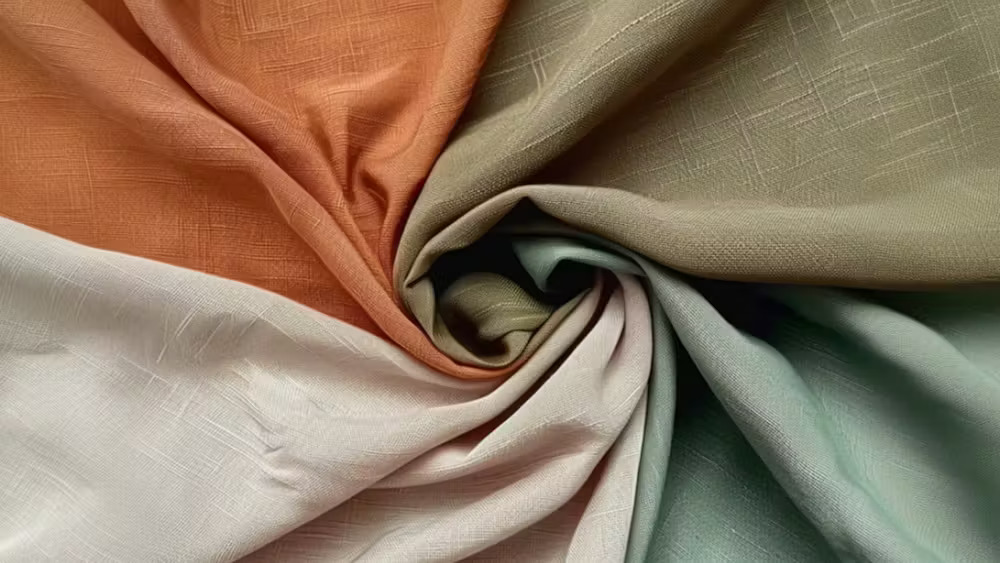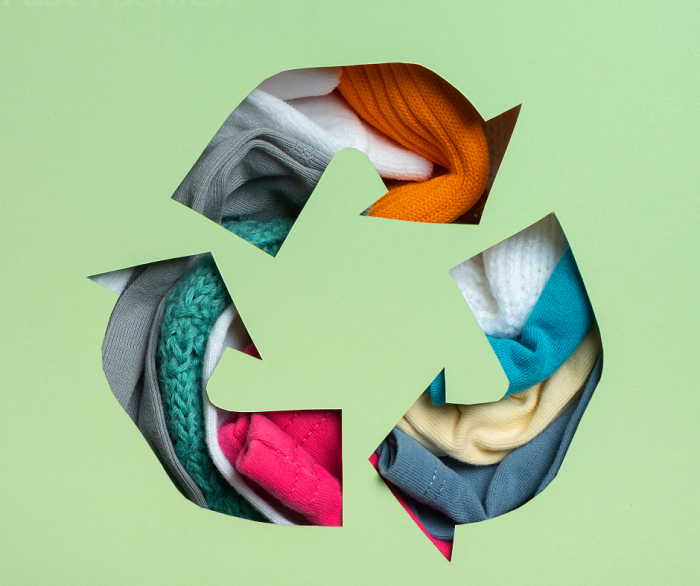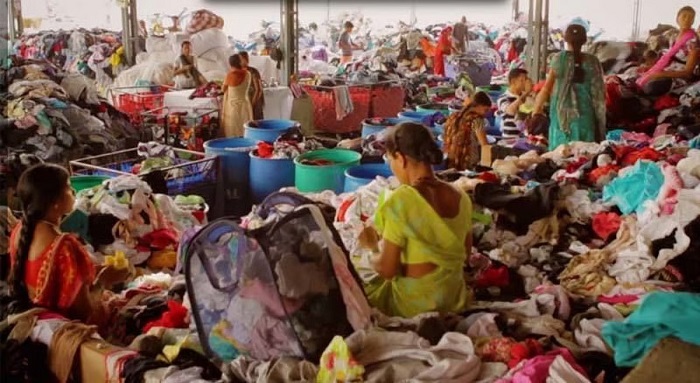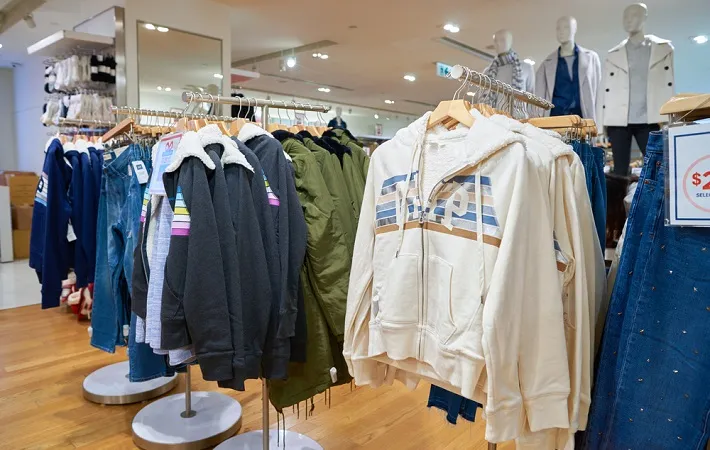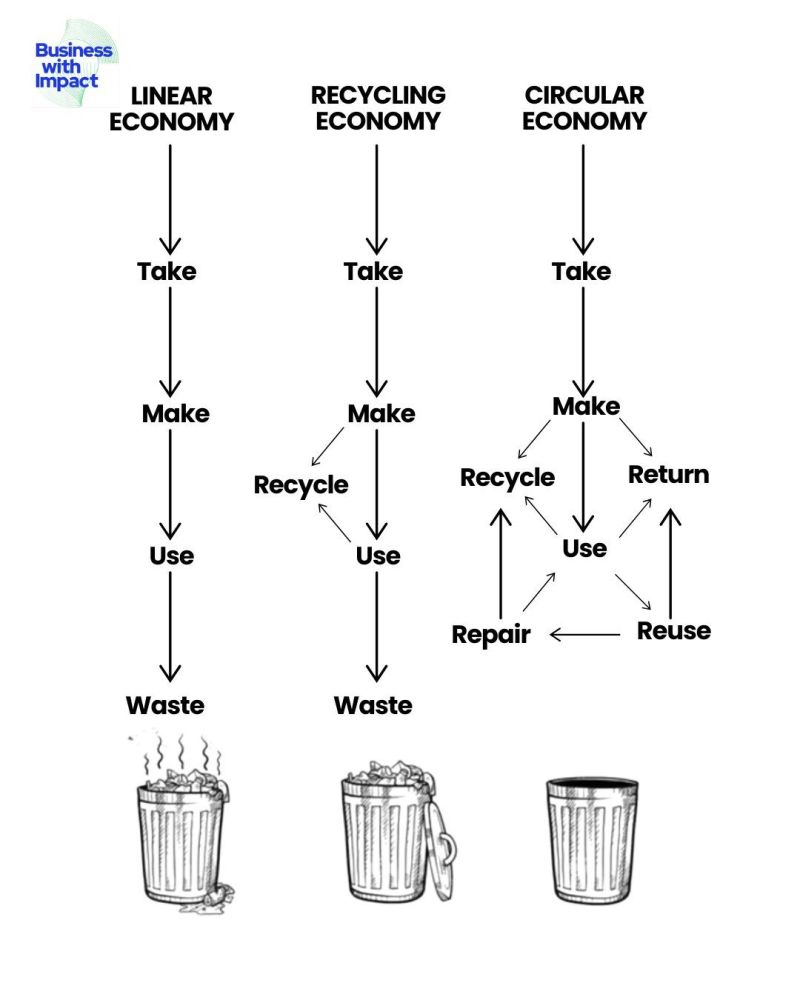FW
Following Earth Day, luxury group Kering has unveiled a comprehensive Water-Positive Strategy, pledging to achieve a Net Water-Positive Impact by 2050 and measurable improvements in key water hotspots by 2035. Moving beyond reducing water consumption, Kering is aiming to actively restore and regenerate water sources and surrounding ecosystems where it operates, setting a new benchmark for sustainability in the luxury sector.
The Water-Positive Strategy is the latest step in Kering’s science-based sustainability roadmap, addressing the interconnected challenges of climate change, biodiversity loss and water scarcity. By leveraging a Climate-Nature-Water nexus, the Group seeks to regenerate ecosystems, foster collaborative opportunities, and boost resilience across its value chain. Focusing on 10 priority freshwater basins most impacted by its activities, Kering plans to work closely with local stakeholders to enhance water quality, quantity and accessibility.
To drive this transformation, Kering has outlined three major programs. The Water-Positive Raw Materials initiative will prioritize sourcing materials that reduce pressure on ecosystems, including recycled fabrics, innovative alternatives and products from regenerative agriculture, helping to reduce pollution and replenish watersheds. The Water-Positive Stewardship Program will elevate water management across Kering’s operations and supply chain, encouraging strategic suppliers to adopt best practices and technologies like chrome-free tanning and water-efficient processing to improve water resources.
Additionally, Kering will establish Water Resilience Labs in each of its priority basins by 2035, starting with the Arno Basin in Tuscany in 2025. These Labs will engage suppliers, other industries, local communities, indigenous groups and public authorities to regenerate healthy freshwater ecosystems through collective action. The Arno Basin, a major water resource for Kering’s tanneries and other manufacturing sectors, will serve as a model for water-positive collaboration and innovation.
Marie-Claire Daveu, Chief Sustainability and Institutional Affairs Officer at Kering, emphasized the urgency of transformative water stewardship. She stated that Kering’s approach moves beyond water reduction to regeneration, aiming to deliver tangible, water-positive outcomes that enhance social, environmental and economic resilience, and ultimately contribute to the global availability of clean water.
As the demand for personal protective equipment (PPE) increases globally, particularly for security forces, Karl Mayer’s Technical Textiles division is advancing solutions for producing ultra-light, high-performance fabrics.
The company has focused on creating multiaxial non-crimp fabrics that provide protection while maintaining comfort, a key factor for wearability. Jurgen Troltzsch, Special Specification Project Manager, explains that the company has been refining fabric solutions for several years, using aramid fibres for strong, lightweight protective materials.
These fibres, processed through a two-stage system involving the UD 700 fibre spreading machine and the Cop Max 5 multiaxial warp knitting machine, form fabrics with individual layer weights as low as 90 g/m².
Despite these advancements, the team sought to reduce weight further for enhanced comfort. They turned to ultra-high molecular weight polyethylene (UHMWPE) fibres, which are lighter than aramid yet offer equal energy absorption from projectiles.
Using the UD 700 fibre spreading system, UHMWPE fibres are spread into ultra-thin tapes, some as light as 30 g/m² per layer. The fibres are laminated with a 10 µm polymer film to fix the layers and prevent breakage during further processing.
In testing, cross-plies made from UHMWPE fibres met rigorous standards, including the US NIJ Standard 0101.06 for bulletproof materials. The Karl Mayer process enables the production of lighter, more cost-effective protective textiles without the need for liquid chemicals or energy-consuming processes. This innovation in multiaxial technology is already attracting attention from customers seeking advanced PPE solutions.
India’s textile and apparel sector is undergoing a major transformation, driven by digitisation, sustainability, smarter production, and responsible manufacturing. At the forefront of this shift stands Gartex Texprocess India - Mumbai, set to unfold the next chapter for the industry. Organised by Messe Frankfurt Trade Fairs India Pvt Ltd and MEX Exhibitions Pvt Ltd, the event will run from 22 to 24 May 2025 at the Jio World Convention Centre, Mumbai.
With over 125 exhibitors representing 300-plus brands and growing international participation, the expo promises a panoramic showcase of innovations shaping the future of textile manufacturing. Strong global representation from China, Italy, Japan, Korea, Singapore, and a special pavilion from Taiwan will complement leading Indian companies like Balaji Sewing Machines, DCC, EH Turel, Mexum, Pantone, and Sky Enterprises. International brands such as Epson, Kornit, and MACPI International will also feature, either directly or through partners.
Focused on technology integration, automation, and responsible manufacturing, the event will feature a range of cutting-edge solutions for the garment and textile sectors. Curated knowledge sessions will further highlight new directions in sourcing, production, and innovation.
The Denim Show, powered by the Denim Manufacturers Association, will bring together India’s major denim manufacturers and mill owners. As demand for eco-conscious denim rises, the show will offer critical insights into the sector’s evolution towards sustainability and style.
Adding to the dynamic display, the Fabrics and Trims Show and Screen Print India - Textile will spotlight innovations in fabrics, trims, digital screen printing, and accessories. With 25-plus new entrants across expanding categories, the show is set to attract denim designers, boutique owners, apparel brands, garment manufacturers, sourcing heads, and more.
Himani Gulati, Director, MEX Exhibitions Pvt Ltd, remarked, “Gartex Texprocess India is not just a trade fair, it’s a catalyst for transformation. It reflects the rising strength of Made in India on the global textile map.”
Raj Manek, Executive Director and Board Member, Messe Frankfurt Asia Holdings Ltd, added, “India’s textile industry is evolving rapidly with intelligent automation and cleaner manufacturing practices. Gartex Texprocess India - Mumbai is the platform to witness these innovations that will define the future.”
Gartex Texprocess India 2025 is poised to be the ultimate confluence of technology, talent, and trade, reaffirming India’s ascent as a global textile powerhouse.
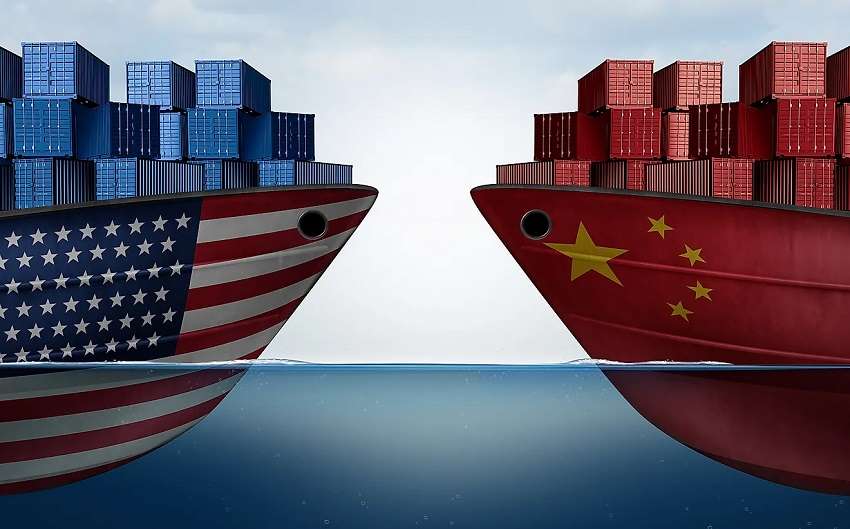
The recent escalation of reciprocal tariffs between the US and China has sent ripples through the global fashion, apparel, and textile industries, with Chinese manufacturers and consumers alike bracing for impact. While anxieties about reduced export volumes to the US are palpable, a rise in nationalistic sentiment and a shift towards domestic consumption are reshaping the landscape.
A nation united, yet wary
Social media platforms like Weibo and WeChat are filled with discussions regarding the trade tensions. While overt anti-American rhetoric remains moderated, a strong sense of national pride and a determination to bolster domestic industries are evident. "We must rely on ourselves," echoed a post on Weibo, garnering thousands of likes. "Our strength lies in our ability to adapt and innovate."
However, trade bodies like the China National Textile and Apparel Council (CNTAC) have expressed concerns over the long-term implications. "The impact on export-oriented enterprises, especially SMEs, will be significant," a CNTAC spokesperson noted in a recent press conference, citing potential job losses and reduced profit margins. "We are urging the government to provide targeted support," said a CNTAC official press release.
A report from the China Chamber of Commerce for Import and Export of Textiles (CCCT) estimates that the new tariffs could result in a 10-15 per cent decrease in Chinese textile exports to the US within the next 12 months. A survey conducted by a Chinese market research firm, iResearch ‘iResearch Consumer Sentiment Report, 2024’, indicated that while 65 per cent respondents felt a sense of "patriotic duty" to support domestic brands, 40 per cent expressed concerns about potential price increases due to the tariffs. Furthermore, 25 per cent of surveyed individuals stated they would actively seek out non-US brands for apparel and textiles.
Reworking the silk road
To mitigate the risks associated with US tariffs, Chinese textile and apparel manufacturers are actively diversifying their supply chains. This includes
Expanding production in Southeast Asia: Vietnam, Cambodia, and Bangladesh are emerging as attractive alternatives, offering lower labor costs and preferential trade agreements with other markets.
Accelerating automation and technological upgrades: Investments in advanced machinery, robotics, and AI-powered production systems are aimed at enhancing efficiency and reducing reliance on manual labor.
Building robust domestic supply networks: Strengthening partnerships with domestic suppliers and logistics providers to ensure a more resilient and self-reliant supply chain.
A case study of a major textile manufacturer, Youngor Group, in Guangdong province revealed a planned investment of $50 million in automation upgrades over the next two years, with a focus on smart warehousing and robotic assembly lines. They are also establishing new production lines within Vietnam.
According to the Ministry of Industry and Information Technology (MIIT), China's investment in textile-related automation technologies grew by 20 per cent year-over-year in the first quarter of 2024. (Source: MIIT Industry Report, 2024).
The dragon's appetite
China's vast and burgeoning domestic market is seen as a crucial buffer against the impact of US tariffs. The government is actively promoting domestic consumption through various initiatives, including
· "Dual Circulation" strategy: Emphasizing the importance of both domestic and international economic cycles, with a focus on boosting internal demand.
- E-commerce expansion: Leveraging the power of online platforms like Alibaba and JD.com to connect domestic manufacturers with consumers.
- Promoting "Guochao" (national trend) brands: Encouraging the consumption of domestically produced goods that incorporate traditional Chinese cultural elements.
Data from the National Bureau of Statistics shows that retail sales of clothing, footwear, and textiles in China grew by 8.5 per cent in the first quarter of 2024, indicating strong domestic demand. Furthermore, online retail sales of apparel increased by 12 per cent in the same period, highlighting the importance of e-commerce.
Table: Domestic consumption growth
|
Quarter |
Year |
Growth Rate (Clothing, Footwear & Textiles) |
Online Apparel Sales Growth |
|
Q1 |
2024 |
8.50% |
12% |
|
Q4 |
2023 |
7.20% |
9.80% |
|
Q3 |
2023 |
6.80% |
8.50% |
Global brands in the crossfire
Global fashion brands that rely heavily on Chinese manufacturing for their US-bound exports are facing significant challenges. The fear of drastic reduction of buying from China is real. However, the situation is more complex when considering the sales of these same brands within China.
Brands with large-scale production in China for US markets are actively exploring alternative sourcing options. Meanwhile the growing Chinese middle class and their increasing appetite for luxury and international brands represent a significant opportunity. However, brands must carefully navigate the complex interplay of national pride and consumer preferences in China.
For example, a major European sportswear brand, Adidas, while facing potential export disruptions, reported a 15 per cent increase in online sales in China during a recent promotional campaign on Tmall.
Meanwhile, American clothing brand with factories in China are actively diversifying manufacturing to Vietnam and Bangladesh, but cannot ignore the immense market potential within China itself. It's a delicate balancing act for them.
The situation requires global brands to create a delicate balance of maintaining their export supply lines while also capitalizing on the growing domestic market within China. The future of the fashion industry will heavily depend on how efficiently these brands navigate the complexities of this evolving trade landscape.
The fact that many global brands not only sell within China but also source significant portions of their global production from Chinese factories creates an additional layer of complexity. These brands are now facing the challenge of potentially increased production costs due to tariffs, which could impact their profit margins worldwide. Simultaneously, they must navigate the delicate political climate within China, where any perceived shift away from Chinese sourcing could trigger consumer backlash.
A recent analysis by a financial consulting firm highlighted that brands with over 30 per cent of their global sourcing originating from China face the highest risk of supply chain disruption and increased costs. This scenario forces brands to reassess their sourcing strategies, potentially accelerating diversification efforts, but also necessitating careful communication and brand management within the Chinese market.

At a time of evolving trade policies and geopolitical uncertainties, Vietnam and India are looking to deepen their cooperation in the textile and garment sector, recognizing the significant mutual benefits that can be unlocked. A recent statement by Bùi Trung Thướng, Trade Counselor at the Vietnam Trade Office in India, highlighted the strategic imperative for both countries to strengthen their ties, particularly in light of the US's new reciprocal tax policy.
Complementary strengths, shared opportunities
Vietnam, a global garment export powerhouse with exports reaching an estimated $44 billion in 2024, is seeking to diversify its supply chains and reduce its reliance on China, which currently provides 65 per cent of its textile inputs. India, a leading raw materials supplier, especially cotton and yarn, and a country with a rich textile heritage, presents a compelling alternative.
"The synergy between Vietnam's manufacturing prowess and India's raw material abundance is undeniable," states Thướng. "By leveraging the ASEAN-India Free Trade Agreement (AIFTA), Vietnam can significantly reduce material costs, enhancing its competitiveness."
India's strengths extend beyond raw materials. It boasts of a diverse textile industry, encompassing natural fibers like cotton, jute, silk, and wool, as well as synthetic fibers such as polyester and nylon. Its capacity to produce a wide range of blended and technical textiles positions it as a vital partner for Vietnam.
Regional cooperation the way forward
The US' new reciprocal tariff poses a significant challenge to both Vietnam and India, potentially increasing export costs. This necessitates a shift towards regional cooperation and diversification into other FTA markets, including the EU, Japan, and South Korea.
To solidify this partnership, Thướng has proposed several initiatives: First proposal is the setting up of a $500 million ‘Joint Investment Fund’ to establish spinning mills in southern India and northern Vietnam, along with smart fabric research centers in Ho Chi Minh City and Bangalore. Another proposal is a bilateral preferential tax agreement reducing import-export costs and enhancing competitiveness. Thướng propose setting up of a ‘Vietnam-India Textile Innovation Fund’ supporting joint research on green technologies, technical textiles, and recycled materials. Vietnam can import shuttleless looms from India, which are 30-40 percent cheaper than European imports.
The ASEAN-India Free Trade Agreement (AIFTA), signed in 2009 and implemented in 2010, plays a crucial role in facilitating trade between the two nations. It has led to significant reductions in tariffs, boosting bilateral trade. The AIFTA has provisions that allows for preferential tariff rates on numerous goods, including many textile products. This directly assists in the reduction of costs, that Thuong spoke of.
Table: India-Vietnam textile import and export
|
Year (Jan-Nov) |
Category |
India exports to Vietnam |
India imports from Vietnam |
Notes |
|
2022 |
Total Textile Trade |
333.884 |
302.204 |
Overall trade volume. |
|
Yarn |
118.367 |
82.907 |
Increasing Indian yarn exports. |
|
|
Fabric |
77.928 |
106.976 |
Vietnam fabric export to India higher than India's to Vietnam. |
|
|
Fibre |
137.589 |
112.32 |
High volume of fiber trade. |
|
|
2023 |
Total Textile Trade |
327.282 |
247.306 |
Trade values fluctuated. |
|
Yarn |
151.578 |
74.298 |
Continued yarn export growth. |
|
|
Fabric |
71.198 |
75.865 |
Fabric trade remained relatively stable. |
|
|
Fibre |
104.505 |
97.143 |
Fiber trade remained high. |
|
|
2024 |
Total Textile Trade |
404.446 |
212.76 |
Indian textile export values are greater than import values. |
|
Yarn |
173.408 |
55.908 |
Strong growth in yarn exports. |
|
|
Fabric |
67.319 |
76.984 |
Fabric trade remained similar to the previous year. |
|
|
Fibre |
163.719 |
79.866 |
Increased fiber export from India. |
A strong partnership between Vietnam and India in the textile and garment sector holds immense potential. By diversifying supply chains, leveraging FTA benefits, and fostering innovation, both nations can navigate global trade challenges and secure a prosperous future. This collaboration represents a strategic move towards building resilient and mutually beneficial economic ties.
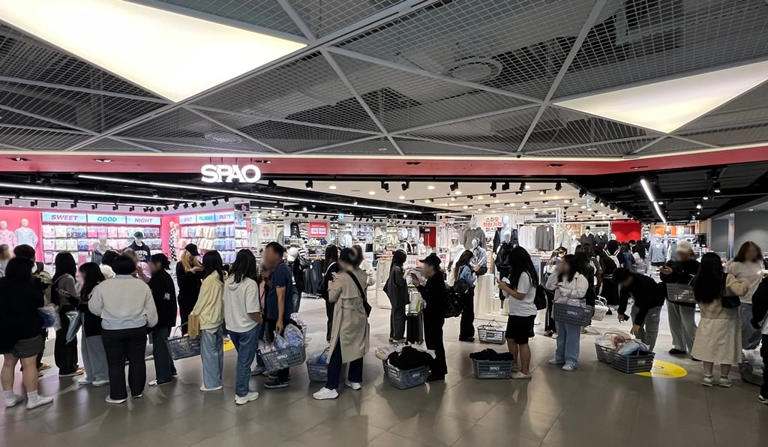
South Korea's fashion market is seeing growing demand for affordable and functional apparels. This shift is challenging the dominance of traditional premium brands and reshaping market dynamics across various segments.
The rise of value fashion
A growing segment of value-conscious consumers is boosting the growth of budget-friendly fashion. Retailers across the country are responding by introducing and increasing their low-cost apparel lines, signalling a clear shift in consumer preferences. This trend is evident in the good performance of companies prioritizing affordability and functionality.
The traditional hierarchy of South Korea's fashion industry is being disrupted. Companies focusing on accessible price points are achieving significant growth and profits, surpassing established players in terms of operating profit.
For example, E-Land World Co, a prominent player specializing in value brands has emerged as a leading force, reporting an operating profit of 173.7 billion won ($122 million) in 2024. This figure outpaces the operating profits of major players, indicating a substantial shift in the market. Meanwhile, traditional ‘Big Five’ players are seeing their dominance challenged.
The value-driven company has achieved consistent sales growth over the past five years, with domestic fashion revenue reaching 1.6839 trillion won ($1.1 billion) in 2024. An important brand within this company's portfolio has experienced an average annual sales growth of approximately 20 per cent over the past three years, which is almost 600 billion won ($419 million) in 2024, up from 320 billion won in 2021.
Market segmentation
Budget fashion: This segment is witnessing rapid increase, due to consumers seeking affordable yet functional clothing. Retailers are introducing new low-cost apparel lines, including T-shirts priced as low as 3,000 won and jeans for 19,900 won. Brands offering affordable basics and practical features are gaining popularity among middle-income shoppers, particularly teenagers and young adults.
Premium fashion: While still a significant segment, traditional premium brands are facing increased competition from value-driven alternatives. The trend toward affordability is impacting all sectors, with brands offering budget-friendly options across menswear, womenswear, and kidswear.
Market Growth: Online fashion platforms are creating dedicated categories for fast fashion brands, reflecting the growing consumer demand. Retailers are increasing their product offerings to include a wider range of affordable items, such as activewear, underwear, and accessories.
Factors driving the change
- Value-conscious consumers: Economic pressures and changing consumer preferences are driving demand for affordable apparel.
- Focus on functionality: Brands that emphasize practical features, such as easy care and high performance, are gaining traction.
- Efficient production models: Companies are adopting cost-saving production strategies, including outsourcing manufacturing to countries like Vietnam and Myanmar, to offer competitive prices.
- E-commerce growth: Online platforms are playing a crucial role in expanding the reach of fast fashion brands.
Projected market trends
The South Korean apparel market is expected to continue its shift towards value-driven fashion. The current trend indicates a sustained growth in the budget and mid-range segments. The increasing availability of affordable and functional apparel online and in physical stores is expected to further fuel this growth. Future market growth will depend on how established brands respond to the changing market. The ability to adapt to consumer needs for affordability and functionality will determine the leaders of the Korean apparel market.
Global fashion’s impact
South Korean apparel market is significantly influenced by both the rise of global fast fashion and the explosive growth of online sales.
South Korea, with its trend-conscious population, is a prime market for global fast fashion brands. These brands, known for their rapid production cycles and affordable prices, have reshaped consumer expectations. The ability of fast fashion to quickly replicate catwalk trends and offer them at accessible price points has driven a shift in consumer behavior. Brands like Uniqlo, Zara, and H&M have established a strong presence in South Korea, both online and offline. Additionally, online global fast fashion retailers, have also made a large impact.
South Korea's high internet penetration and tech-savvy population have boosted the rapid growth of online apparel sales. E-commerce platforms like Coupang, Gmarket, and 11Street have become major players, offering consumers convenience and a wide selection of products. Studies say, South Korean online fashion market clocked in around $25 billion revenue in 2024. And Coupang has the highest online fashion net sales. Mobile shopping apps have further pushed this trend, allowing consumers to browse and purchase apparel anytime, anywhere.
Thus the South Korean apparel market is expected to continue its shift towards value-driven fashion. The current trend indicates a sustained growth in the budget and mid-range segments. The increasing availability of affordable and functional apparel online and in physical stores is expected to further boost this growth. Future market growth will depend on how established brands respond to the changing market. The ability to adapt to consumer needs for affordability and functionality will determine the leaders of the Korean apparel market.
The Joint Apparel Association Forum (JAAF) has welcomed the Government of Sri Lanka’s proactive engagement with the Office of the United States Trade Representative (USTR) in Washington D C. JAAF expressed appreciation to President Anura Kumara Dissanayake and the Sri Lankan delegation for prioritizing discussions aimed at strengthening equitable and mutually beneficial trade relations.
The United States remains a vital trading partner for Sri Lanka’s apparel sector, which directly employs 350,000 people and supports another 700,000 livelihoods. JAAF commended the Government’s commitment to addressing key trade barriers and safeguarding market access and competitiveness for Sri Lankan exports.
The association emphasized the importance of achieving tariff parity with other apparel-producing nations, ensuring a level playing field for Sri Lankan exporters. It urged both governments to consider the long-term sustainability of Sri Lanka’s apparel industry, a critical pillar of the national economy and a global leader in ethical manufacturing.
As discussions move towards a potential bilateral trade agreement, JAAF highlighted the industry’s adherence to full traceability, transparency, and sustainability standards, and called for special concessionary tariffs in recognition of these practices. JAAF expressed full support for continued dialogue, aiming for a future-focused agreement that enhances trade, attracts investment, and drives shared prosperity.
Hyosung Group's textile division has teamed up with South Korea's largest online fashion retailer, Musinsa, to promote its sustainable fiber, Regen, throughout the fashion industry.
The partnership between Hyosung TNC and Musinsa Earth, a collective of fashion brands on Musinsa committed to eco-conscious manufacturing and materials, was formalized on April 18, 2025.
According to the agreement, Hyosung TNC will provide its Regen fiber to Musinsa's partner brands and actively encourage its adoption by the over 300 brands featured on Musinsa's platform.
Hyosung TNC emphasizes, this ‘versatile and far-reaching,’ collaboration will encompass everything from new product development to promotional and marketing initiatives.
Regen is a fiber produced from recycled discarded fishing ets and plastic PET bottles, and it comes in various forms, including Regen Spandex, Regen Nylon, and Regen Polyester.
Hyosung TNC states, the initial launch of products incorporating Regen is scheduled for World Environment Day on June 5, 2025. Seven brands selling on Musinsa will introduce fashion items made with Regen.
Furthermore, Hyosung TNC's fashion design center plans to host a workshop for Musinsa sellers in the latter half of the year to showcase Hyosung TNC’s complete range of environmentally friendly fiber materials.
Kim Chi-hyung, CEO, Hyosung TNC avers, the company's alliance with ‘the top platform for fashion brands in Korea will strengthen its leading position in the recycled fiber market.
A greater number of fashion brands on Musinsa will utilize Regen in their products. This partnership will continue to diversify and inspire more fashion brands in Korea to switch to recycled fibers, he adds.
A Musinsa representative notes, the increasing demand for sustainable products and brands within the South Korean fashion market is driving brands to show greater interest in developing their own eco-friendly apparel and fashion accessories.
Musinisa’s partnership with Hyosung TNC will support these brands and contribute to the growth of the country's sustainable fashion market, the official adds.
Filatex India plans to invest Rs 235 crore in its Dahej plant to boost capacity of partially oriented yarns of 19,800 mtpa, fully drawn yarn of 28,800 mtpa and draw textured yarn of 14,499 mtpa
The company registered a 19 per cent rise in net profit to Rs 41 crore ($4.8 million) in Q4, FY25 as against Rs 35 crore in the year-ago quarter.
The company’s revenue increased by 5 per cent rise during the quarter to Rs 1,080 crore, as against Rs 1,026 crore in the corresponding quarter of the previous fiscal year.
For full FY25, Filatex India’s net profit increased to Rs 135 crore while revenue grew to Rs 4,252 crore.
As per Madhu Sudan Bhageria, Managing Director, the company has been witnessing a stabe demand over the last two quarters. But, its profit margins have remained unchanged. The company expects margins to improve in the coming in coming months on account import curbs and tariffs.
Filatex India is one of India’s leading manufacturers of polyester filament yarn focused on capitalising synergies created through its integrated business model.
Denim Premiere Vision will return to Milan, Italy, for its 35th edition on 21 and 22 May, showcasing the autumn-winter 2026-2027 denim collections of over 80 exhibitors. Organised by GL events fashion division and under the patronage of the city of Milan, the event will bring together exhibitors from Italy, Turkiye, Morocco, Japan, China, France and the United States.
Florence Rousson, Chairwoman of the Executive Board of Premiere Vision and CEO of The Creative Pole, said the event offers the denim industry a dynamic platform for innovation, creativity and business opportunities. This year’s event features eight dedicated sectors fabrics, manufacturing, accessories, yarns, promotion, technologies, laundry and fibres. The Hybrid Denim forum will highlight the fusion of materials, techniques and cultures, with special projects from designer Aurelia LeBlanc and a sustainable collaboration between Kelly Konings and denim mill Gommatex.
The Project Tomorrow initiative will nurture emerging talents from fashion, design and art schools worldwide. Meanwhile, the Denim Fashion District will showcase capsule collections from brands such as Fade Out Label, Stripes Off Road, Daily Blue by Adriano Goldschmied and others.
Four keynote sessions are scheduled, including talks by Anne Oudard, Ani Wells, Kelly Konings and Amy Leverton, offering insights into upcoming denim trends and innovations.
A special tribute will honour Luigi Martelli, the late pioneer who revolutionised denim finishing. Curated by Fabio Adami Dalla Val and OPAA, with contributions from Adriano Goldschmied and Giovanni Petrin, the tribute will feature rare archival pieces from the Museo del Denim, celebrating Martelli’s profound legacy in shaping the modern denim industry.

